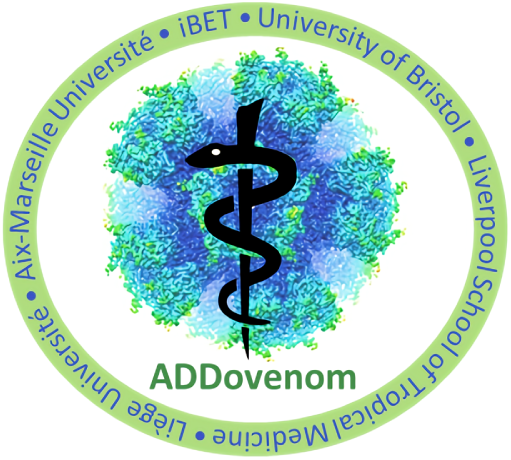For our Researcher Spotlight features, we interview members of the ADDovenom research team, to find out about their interests, their contributions to the project, and their hopes for the future of venom research
Here, we speak with Damien Redureau, a PhD student at the Mass Spectrometry Laboratory (LSM), University of Liège.
Can you tell us briefly about your own research interests and background?
I have a particular interest in venomics and the characterization of toxins present in venoms. I completed a Bachelor’s degree in cell/molecular biology and physiology (Angers, France) and then a Master’s degree in molecules and therapeutic targets (MNHN, Paris, France). I am now a PhD student in chemistry at the MSLab of ULiège in Belgium. During a previous internship, I worked on cone snail, spider and snake venoms and I am continuing that research as a PhD student.
When did you first become interested in venom research?
I have always been interested in venomous animals, but it was during my undergraduate courses on this subject that my desire to work in venom research emerged. Furthermore, this field of research means working with lots of different approaches (such as electrophysiology and mass spectrometry), and there are plenty of venomous species to work on. There are still a lot of interesting discoveries to be made in venom research.
What are your key responsibilities in the ADDovenom project?
I am a PhD student on this project and my work focuses on identifying and characterizing the toxins present in Echis and Dendroaspis venoms. We are also developing an antivenomics approach to identify which toxins are currently targeted by actual antivenoms, and will apply this approach to ADDomers in the future. Additionally, we will perform the quality control of the recombinant toxins and ADDomers from the project.
What do you hope will be the main outputs from your work on ADDovenom?
Firstly, we hope to provide a complete database of deleterious toxins for each of the nine snake species being investigated in this project. Secondly, we hope to be able to apply our antivenomic approach to the ADDomers in order to analyze their efficacy compared to existing antivenoms.
Can you tell us of one recent development in the world of venom research that has interested you?
One development that has impressed me greatly is the development of snake venom gland organoids in vitro. (Post Y, Puschhof J, Beumer J, et al. Snake Venom Gland Organoids. Cell. 2020;180(2):233-247.e21. doi:10.1016/j.cell.2019.11.038)
Do you have a favourite snake – if so, which one, and why?
My favourite snake is the Bothrops lanceolatus, the Martinique lancehead, a species endemic to the island where I’m from. It has a powerful venom that imposes respect and it is one of the species that has its own antivenom.
Is there anything else you would like to tell us?
ADDovenom is a wonderful project. I sincerely hope that our work will resonate with the public, and shed more light on the problem of snakebites. And hopefully the project will lead to the availability of a new therapeutic approach in the future, which is our main goal.


